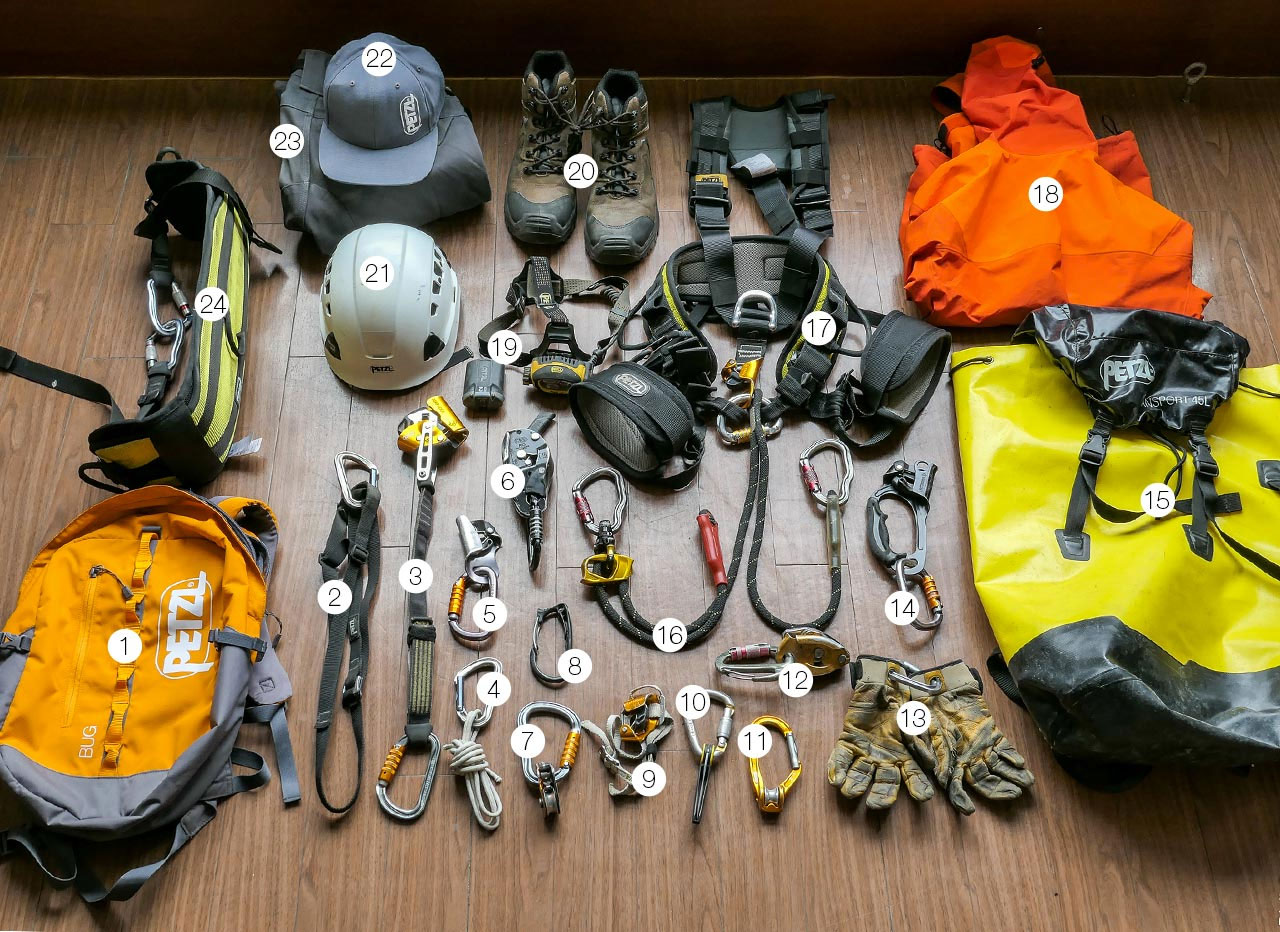Ivan, could you tell us a little about your background?

"I've been a rope access professional and rock climber for the last 17 years, yet my goal at the start was not necessarily to pursue a career in the vertical world. Since I grew up in Brittany (France), I needed to migrate to a rockier region with boulders and crags of all sorts – even though Brittany also has a few - so the south of France was the ideal destination. I spent time at a wide variety of work sites during my first forays into the rope access profession: public works, building construction, and industrial maintenance. At the same time, I continued to climb as much as possible at crags in the south of France, especially around Millau, a region where I established several new routes, including quite a few for the Petzl RocTrip.
Four years ago I started participating in rope access competitions. These events combine technique with physical strength. After posting good results, I was invited to participate in the 2016 Petzl RopeTrip in Salt Lake City. Antoine Quidoz, Yohan Garcia, and I teamed up and won the competition, taking home a magnificent cow-horn trophy. We beat the defending champions, the Russian team.
In addition, with my level 3 professional certification and as a state-certified climbing instructor, I naturally gravitated 5 years ago towards teaching rope access courses."
What do you put in your pack when you head to a work site?

"When heading to a work site I bring:
- A BUG backpack for all of my personal affairs, including my climbing shoes so I can go bouldering after work.
- A FOOTAPE adjustable webbing foot loop for ascending ropes.
- The ASAP® LOCK and ASAP'SORBER lanyard: this is the fall arrest device best suited for rope work since it follows you hands-free on both the ascent and descent.
- A length of Dynemma® tech cord with a SPIRIT carabiner is always useful for an intermediate anchor or to hang gear.
- A BASIC rope clamp: this lightweight and compact device serves as my backup rope clamp. You can clip it to your harness for hoisting or use it to replace an ASCENSION ascender.
- A RIG descender: this self-braking, ergonomic system is easy to set up for descending a rope. With the ASAP fall-arrest device, these are the two primary devices rope access professionals use.
- A lightweight and compact MICRO TRAXION progress-capture pulley. I keep this on my harness for any emergency hoists such as for a rescue.
- A CARITOOL tool holder to clip gear to my harness.
- A PANTIN® foot rope clamp is essential for ascending ropes quickly when using "alternating" technique.
- A SPATHA knife for slicing salami at lunch as well as in an emergency, such as to cut a stuck rope or something else.
- A ROLLCLIP pulley-carabiner, quick to set up at the top of a rope clamp for ascending a rope using the RIG.
- A GRIGRI to stabilize a third rope in order to work via triangulation.
- A pair of CORDEX gloves.
- An ASCENSION rope clamp for ascending a rope of course, but also for hoists.
- A TRANSPORT 45L pack for all of this gear.
- A PROGRESS ADJUST lanyard: the non-adjustable part is clipped to my ASCENSION ascender and the adjustable side serves as a tether for intermediate anchors, zip lines, or other anchors. To unclip, I just create a little slack on the adjustable side.
- A FALCON ASCENT harness certified for rope access work. This is the best-designed harness for ascending a rope quickly, along with the TOP CROLL® chest harness to clip my ASAP fall arrest device. The integrated CROLL® rope clamp serves to ascend a rope.
- A waterproof jacket if it rains.
- An ULTRA® VARIO headlamp to work at night or in confined spaces. Its major strong point: battery life.
- A pair of safety boots.
- A VERTEX® VENT helmet, comfortable and well-ventilated.
- A Petzl baseball hat for excursions.
- A pair of work pants.
- A PODIUM seat to work comfortably in those situations where I spend several hours descending a rope. This is absolutely necessary to avoid any blood circulation problems in your legs that can be caused by hanging in your harness for too long."
credits and images: Petzl



